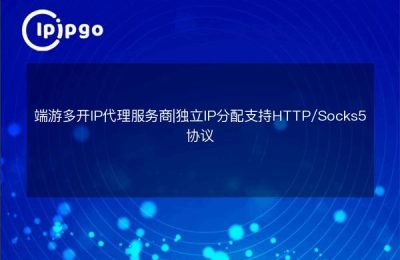
In today's era of information explosion, network security and privacy protection are especially important. Proxy IP, as a common network tool, can help users hide their real IP address and protect their privacy. HTTP proxy, as one of them, is popular for its simplicity and ease of use. So, how to recognize HTTP proxy? Let's go into this mysterious world together.
What is an HTTP proxy?
Before we explore how to recognize an HTTP proxy, let's understand what an HTTP proxy is. Simply put, an HTTP proxy is an intermediary server that passes HTTP requests and responses between the user and the destination server. It's like when you order food in a restaurant, the waiter (proxy) passes the menu to the kitchen (server) for you and then delivers the delicious food to your table (user). With an HTTP proxy, the user's real IP address can be hidden, thus protecting online privacy.
How HTTP proxies work
The working principle of HTTP proxy is not really complicated. The user sends an HTTP request to the proxy server, and after the proxy server receives the request, it sends the request to the target server as itself. The target server processes the request and returns the response data to the proxy server, which then passes the data to the user. This approach not only hides the user's real IP, but also speeds up access, filters content, and so on.
How to recognize HTTP proxy?
The process of identifying HTTP proxies is like a detective solving a crime, it requires careful observation and analysis. Here are a few commonly used methods:
1. View HTTP headers: HTTP requests and responses contain a lot of useful information. By looking at the `Via` and `X-Forwarded-For` fields in the HTTP header, it is possible to determine whether the request has been proxied. For example, the `X-Forwarded-For` field will usually contain the original IP address and the proxy IP address.
2. Use of web-based tools: There are many network tools that can help identify HTTP proxies. For example, Wireshark is a powerful network analysis tool that captures and analyzes network packets, and by analyzing the information in the packets, you can determine if the request went through a proxy.
3. Viewing Proxy Server Logs: If you have access to the logs of the proxy server, then you can easily identify which requests are sent through the proxy by analyzing the logs. The logs usually record information such as the source IP of the request, the destination IP, and the time of the request.
Pros and cons of HTTP proxies
HTTP proxies are powerful, but they also have their advantages and disadvantages. Understanding these advantages and disadvantages can help us to better use and recognize HTTP proxies.
– vantage::
- Hide your real IP to protect your privacy
- Accelerated access and bandwidth savings
- Filtering bad content to enhance the online experience
– drawbacks::
- May result in slower access, especially with free proxies
- Insecure and could be exploited by attackers
- Some websites restrict proxy IPs
How to choose the right HTTP proxy?
Choosing the right HTTP proxy is like picking a pair of well-fitting shoes; the right proxy can make your online life more comfortable. Here are some suggestions for choosing an HTTP proxy:
1. dependability: Choose a reputable proxy service provider to ensure the stability and security of the proxy server.
2. tempo: Try to choose a faster proxy server to avoid slower access due to proxies.
3. anonymity: Ensure privacy protection by choosing different anonymity levels of agents according to your needs.
4. prices: Choose the right proxy service according to your budget. Free proxies, while tempting, are usually less stable and secure.
summarize
HTTP proxy as a convenient web tool plays an important role in protecting privacy and speeding up access. By identifying HTTP proxies, we can better understand and use this tool. Hopefully, this article will demystify HTTP proxies for you and allow you to navigate the online world. Remember, choosing the right proxy service is the only way to make your journey on the web smoother and more hassle-free.








